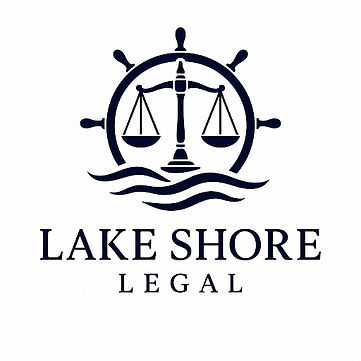Estate Planning-Trusts
- kiel85
- Jul 31, 2018
- 4 min read
When clients come to Lake Shore Legal seeking an estate plan, their goals are routinely to ensure that the assets they own pass to the correct recipients upon death. One of the more common and popular methods to ensure that clients’ wishes and goals are achieved is to place assets into trust. Once the asset is in a trust, the asset is considered to be owned by the trust and governed by the trust instrument. The trust instrument directs how the asset is to be treated and ultimately how and when the asset is to pass to the trust’s beneficiaries.
There are many different trust types that can be drafted depending on clients’ goals and circumstances. Some trusts allow the client to retain power over the asset and the trust. Other trusts completely take all ownership and power away from the client once the asset is transferred.
The more common types of estate planning trusts are briefly discussed below. The explanations below are very broad and highlight an overview of the trust types. An attorney at Lake Shore Legal can offer you a more detailed explanation of how specific trusts can assist you to achieve your estate planning goals. Additionally, our attorneys can analyze your current financial standing and explain how certain trusts may be beneficial for MassHealth planning and further how to potentially protect assets from state and/or federal estate taxes.
REVOCABLE TRUSTS
Revocable trusts are extremely common trusts that can be utilized in a wide variety of ways. These trusts are sometimes referred to as living trusts. The key aspect of a revocable trust is that a revocable trust can be changed, amended, or revoked completely during the lifetime of the trust’s donor.
Most individuals utilize revocable trusts for probate purposes. The assets placed in a revocable trust pass outside of probate. Upon the donor’s death, the trust becomes irrevocable and the trust assets pass in accordance with the terms of the trust document.
A major disadvantage of revocable trusts is that these trusts are not the most effective device to protect the donor’s assets. Due to the fact that the donor retains the ability to amend and/or revoke the trust during the donor’s life, the assets are not truly being protected for tax and MassHealth purposes.
IRREVOCABLE TRUSTS
The major difference between an irrevocable trust and revocable trust is that the irrevocable trust cannot be changed after it is created. Some people find this to be a detriment as they find irrevocable trusts to be less flexible than their revocable counterpart. However, the irrevocability of the trust allows for greater estate planning advantages.
In most circumstances irrevocable trusts are major aspects of estate planning for larger estates looking to shield assets from potential estate tax. This is routinely achieved due to the fact that the donor routinely relinquishes all ownership rights to the asset once it is placed in the trust and cannot demand the asset be returned if the trust document doesn’t allow a transfer back to the donor. Further, irrevocable trusts, if drafted and utilized in the proper manner, can be a method of categorizing an asset as non-countable on a MassHealth application. This is achieved by placing the asset into the irrevocable trust and starting MassHealth’s current 60 month look back period “clock”. We briefly discussed how irrevocable trusts can potentially protect the primary residence in an earlier blog.
Irrevocable trusts can be set up in a manner that the donor still receives some benefit from the trust’s assets. The donor can receive the income of the trust assets while not being able to receive the trust’s principal. This can be a major benefit as the donor has an income stream from the trust while still protecting the trust’s assets from potential estate tax and MassHealth liens.
CHARITABLE TRUSTS
Charitable trusts are less common than revocable and irrevocable trusts. However, these trusts can be beneficial to an individual seeking to leave assets to a charitable cause while seeking methods to reduce or avoid potential gift and/or estate tax exposure.
SPECIAL NEEDS TRUSTS
The goal of a special needs trusts is to ensure that assets are protected for an individual with certain disabilities while ensuring that the disabled individual is able to receive government benefits. The disabled beneficiary cannot control the amount or frequency of the distributions from the trust, but allows the trust’s trustee to control distributions in a manner that would not disqualify the beneficiary from governmental assistance.
Special needs have specific definitions under the law. Assets within these types of trusts can normally be utilized for the following purposes without disqualifying the beneficiary from assistance: medical and dental expenses, equipment, education, treatment, rehabilitation, eye glasses, transportation, maintenance, insurance, essential dietary needs, vacations, movies, and trips. Ultimately the trust can be utilized to maintain the comfort and happiness of the disabled beneficiary when certain items are not currently being provided by a governmental agency.
LAKE SHORE LEGAL
The above trusts are just a few of the numerous trusts available when you are seeking a proper estate plan. For example, there are other trusts available for specific tax purposes, while there are other trust types to protect assets from spendthrifts.
If you are considering setting up an estate plan contact one of our attorneys. Our office will analyze your specific financial and personal situation and the goals in which you wish to achieve. We will customize your estate plan to your individual needs and wishes while ensuring that the assets you have accumulated over life pass to the proper recipients at the time of your passing.
Contact us today. (508) 943-7800; info@lakeshorelegalsolutions.com


Comments